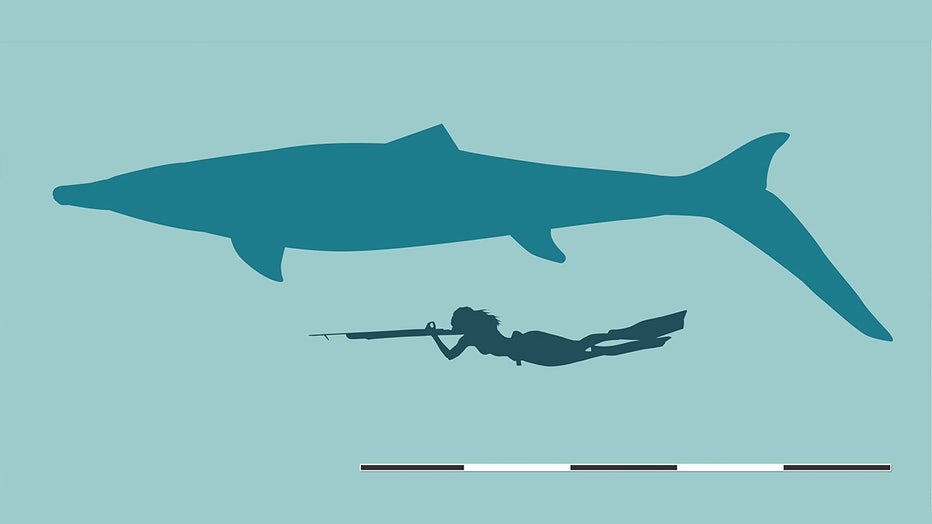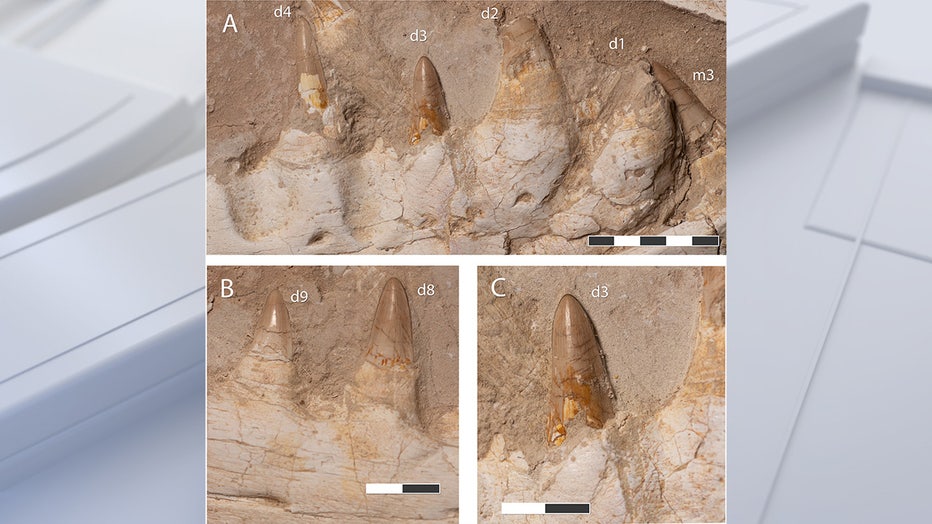Fossil of ‘nightmarish’ sea reptile found in Morocco

FILE - Khinjaria artist reconstruction. (Andrey Atuchin)
Scientists have discovered the fossil of a giant "nightmarish" sea creature that hunted the oceans millions of years ago.
The prehistoric lizard, Khinjaria acuta, was estimated to be about 26 feet long (similar to an orca) and have "dagger-like" teeth, according to the findings published in the journal Cretaceous Research.
The discovery in Morocco of the now-extinct Khinjaria acuta showed how dramatically the oceans have changed over the span of 66 million years. Unlike our oceans today, prehistoric waters were home to numerous giant apex predators that ate large prey, researchers said.

FILE - Size reference of the Khinjaria and a human. (Nick Longrich)
"What’s remarkable here is the sheer diversity of top predators," said Dr. Nick Longrich of the Department of Life Sciences and the Milner Centre for Evolution at the University of Bath, who led the study. "We have multiple species growing larger than a great white shark, and they’re top predators, but they all have different teeth, suggesting they’re hunting in different ways."
The Khinjaria acuta is a relative of today’s Komodo dragon and anaconda. This giant reptile lived at the same time as the Tyrannosaurus and Triceratops.

FILE - Fossilized skull and teeth of Khinjaria acuta. (Nick Longrich)
This giant sea monster was a member of the Mosasuridae family, or mosasaurs, which were giant marine lizards, not to be confused with dinosaurs.

FILE - Fossilized teeth and skull of Khinjaria acuta. (Nick Longrich)
"Some mosasaurs had teeth to pierce prey, others to cut, tear, or crush. Now we have Khinjaria, with a short face full of huge, dagger-shaped teeth. This is one of the most diverse marine faunas seen anywhere, at any time in history, and it existed just before the marine reptiles and the dinosaurs went extinct," Longrich said.

FILE - Fossilized teeth of Khinjaria acuta. (Nick Longrich)
Dinosaurs and these marine reptiles were wiped out after an asteroid struck the Yucatán Peninsula in Mexico. The dust particles from the impact blocked out the sun for months and drove many species to extinction, including the Khinjaria acuta.
This mass extinction event made way for other marine species such as whales, seals, swordfish, and tuna and far fewer apex predators.
"There seems to have been a huge change in the ecosystem structure in the past 66 million years," said Longrich. "This incredible diversity of top predators in the Late Cretaceous is unusual, and we don’t see that in modern marine communities."
This story was reported from Los Angeles.

